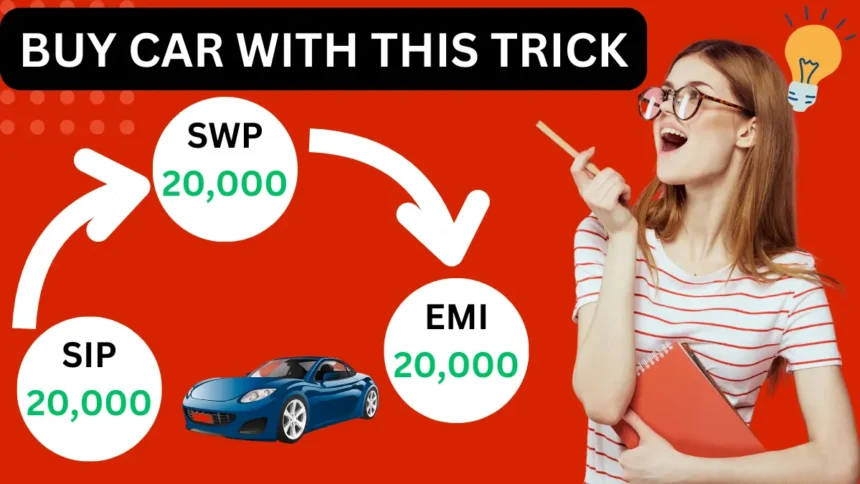Hello, friends!
In today’s world, financial awareness is growing, especially when it comes to leveraging mutual fund strategies like SIP (Systematic Investment Plan) and SWP (Systematic Withdrawal Plan) to meet financial goals. Whether it’s prepaying a home loan or purchasing a car, these strategies can be powerful tools in your financial arsenal. If you’re new to the concept of SWP, don’t worry—I’ve got you covered.
What is SWP?
SWP stands for Systematic Withdrawal Plan, a strategy that allows you to withdraw a fixed amount from your mutual fund investments at regular intervals—monthly, quarterly, or annually. Think of it as the opposite of SIP, where instead of investing money periodically, you’re systematically withdrawing it.
Using SIP and SWP to Buy a Car: Two Effective Strategies
Let’s dive into how you can use SIP and SWP to purchase a car, focusing on two strategies depending on whether you already have the funds or not.
Strategy 1: SIP Your Way to a Car Purchase
Suppose your goal is to buy a car five years from now, a period that’s neither too short nor too long. Here’s a step-by-step approach:
- Start a SIP: Begin with a SIP of ₹15,000 in hybrid mutual funds, aiming for a 10% return. Increase this SIP by 8% annually.
- Projected Growth:
- Year 1: After 12 months, you’ll accumulate approximately ₹1,90,000.
- Year 2: By increasing your SIP to ₹16,200, your corpus should grow to around ₹4,15,000.
- Year 5: By the end of the fifth year, you’ll have accumulated approximately ₹13,53,000.
- Car Loan & EMI:
- The car you like costs ₹17,00,000. You’ll need to take a loan at a 9% interest rate, leading to a monthly EMI of ₹35,290 for five years.
- Since this EMI might be out of your budget, you can withdraw this amount from your mutual fund investment each month while continuing your SIP.
- Yearly Adjustments:
- In Year 6, continue your SIP at ₹22,000 (lower than your EMI) while withdrawing the EMI amount. You’ll still have a balance of ₹15,13,000 at the end of the year.
- By Year 7, your SIP rises to ₹23,803, but your balance still grows, reaching ₹17,32,510.
- At the end of the loan tenure, you’ll have a closing balance of ₹8,49,000, despite having paid ₹4,17,000 in interest.
The beauty of this strategy is that you maintain liquidity throughout the loan period. Even if you can’t continue your SIP, you can still pay your EMI using the SWP. Moreover, by planning in advance, you avoid the risk of your accumulated amount going negative.
Strategy 2: Invest a Lump Sum and Use SWP
If you already have the full ₹17,00,000 needed to buy the car, you have two options:
- Option 1: Pay the full amount upfront and avoid taking a loan. After five years, you’ll have no money left, and the car’s value will depreciate.
- Option 2: Invest the ₹17,00,000 in mutual funds and use SWP to withdraw the EMI amount monthly. After five years, you should still have around ₹1.78 lakh left, assuming a 12% return.
This strategy makes more sense, especially since a car is a depreciating asset. Taking a loan on a depreciating asset and paying interest is not a wise financial decision. Unfortunately, many people in India buy cars beyond their affordability and end up in a cycle of never-ending car loans.
The Importance of Financial Planning
Financially successful people plan their goals and create detailed financial plans. If you’re interested in creating your financial plan, feel free to reach out via WhatsApp at 8800290020.
Conclusion
By using SIP and SWP effectively, you can make smarter financial decisions, even for significant purchases like a car. The key is planning and sticking to your financial strategy. If you found this information valuable, please like this post, share it with others, and consider subscribing for more personal finance tips. Let’s build wealth wisely together!
Thank you for your time, and I look forward to sharing more insights with you soon.
